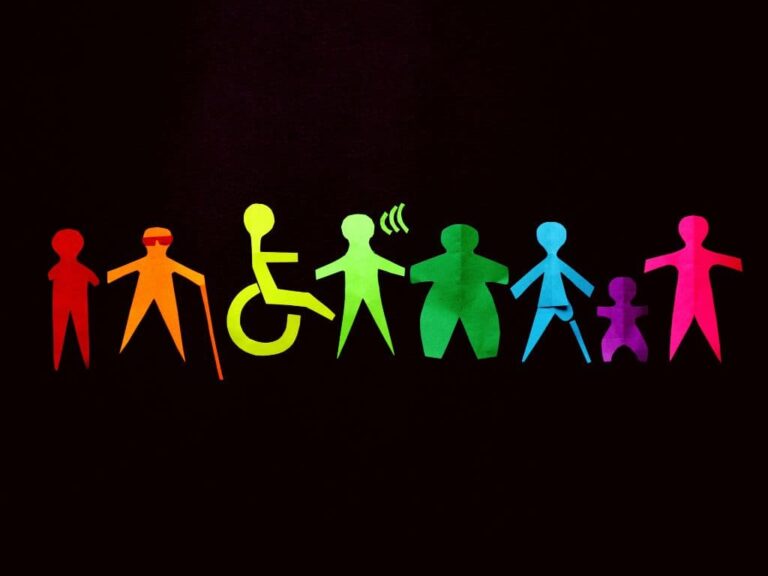What is the Difference Between Assisted Living and Independent Living?
Deciding between assisted living and independent living is an important choice facing many seniors and their families. As seniors age, their housing priorities and daily care needs can change. Assisted living and independent living communities offer two distinct options for senior housing, each with their own services and amenities.
The main difference between assisted living and independent living is that assisted living provides 24/7 care and assistance with daily activities such as bathing, dressing, eating, and medication management for seniors who need it. Independent living is designed for seniors who can care for themselves and offers housing, amenities, and activities but does not provide regular personal care or medical assistance.
Understanding the key differences between these two types of senior living is critical for determining the right fit based on factors like health status, required assistance, and budget.
This guide provides an in-depth overview comparing assisted living versus independent living. It examines the levels of care provided, typical costs and amenities, eligibility requirements, and other considerations that impact choosing between them. With information on what distinguishes these two senior living alternatives, older adults can better evaluate the option that aligns with their care needs and lifestyle preferences during their later years.
The goal is to empower seniors and their loved ones to make an informed decision on assisted or independent living that supports continued health, engagement, and quality of life.

What are the Basic Definitions of Assisted Living and Independent Living?
Assisted living and independent living are two common senior housing options that offer different levels of care and assistance.
Assisted living provides seniors with help carrying out daily activities like bathing, dressing, eating, taking medications, and more. Trained staff are available 24/7 to provide personal care, housekeeping, laundry, meals, medication management, and to help residents with other activities of daily living (ADLs). Assisted living promotes independence while providing support as needed.
Independent living communities are designed for more independent seniors who are still able to care for themselves. These communities provide housing, amenities, and activities tailored to seniors, but do not offer regular assistance with daily activities. Residents live independently in their own apartments or homes and can access community amenities and social events.
How Does Assisted Living Differ from Independent Living in Terms of Care Provided?
The key difference between assisted living and independent living is the level of care provided. Assisted living offers help with ADLs, while independent living does not.
In assisted living, trained caregivers are available 24 hours a day to provide hands-on assistance with bathing, dressing, grooming, eating, taking medications, toileting, and moving around. Some assisted living communities also offer memory care services for residents with Alzheimer’s or dementia who need constant supervision and redirection.
Independent living does not provide assistance with personal care or ADLs. While staff may be available for maintenance and emergencies, daily living assistance is not routinely provided. Independent residents must be able to manage their own self-care and medications.
Here is a table comparing the key differences between assisted living and independent living:
| Assisted Living | Independent Living | |
|---|---|---|
| Care provided | 24/7 assistance with ADLs like bathing, dressing, meals | No hands-on personal care provided |
| Types of facilities | Assisted living communities, memory care units | Independent apartments, CCRCs, active adult communities |
| Cost | $3,000 – $8,000 per month | $1,500 – $4,500 per month |
| Amenities | Meals, activities, housekeeping, medication help | Maintenance-free homes, activities, some meals |
| Eligibility | Age 65+, need help with some ADLs | Must be able to live independently |
| Transition from independent living | Assess care needs, choose facility, arrange move | N/A |
| Benefits | Daily care and support, social connections | Freedom, privacy, independence |
| Challenges | Loss of independence, costs | Limited care and support available |
What are the Specific Types of Assistance Provided in Assisted Living Communities?
The specific types of daily assistance offered can vary between assisted living facilities. Basic assisted living provides help with ADLs like bathing, eating, and mobility. More intensive assisted living offers care for more severe needs, like dementia care or help with using the toilet.
Typical assisted living services include:
- Personal care – bathing, grooming, dressing, toileting
- Mobility assistance – help moving around
- Medication management – administering medications
- Meals & nutrition – dining programs and dietary assistance
- Housekeeping & laundry
- 24-hour staff availability for emergencies
- Social & recreational activities
- Transportation for appointments, shopping, events
- Safety checks and security procedures
What are the Different Types of Assisted Living and Independent Living Communities?
There are several types of senior living communities, which offer different levels of care and amenities.
Assisted living communities provide housing, meals, assistance with ADLs, and amenities in a residential-style setting. Within assisted living, there are varying care levels:
- Basic assisted living – help with minimal ADLs like bathing and medication reminders
- Enhanced care – assistance with more ADLs, mobility, and specialized needs
- Memory care – secured units providing dementia and Alzheimer’s care
Independent living communities offer senior-friendly housing for independent seniors. Options include:
- Independent living apartments – individual apartments in a community setting
- Senior apartments – apartment communities reserved for senior tenants
- Active adult communities – neighborhoods of privately-owned homes for 55+ residents
- Continuing care retirement communities (CCRCs) – offer independent living, assisted living, and nursing home care in one location
How do Memory Care or Other Specialized Services Fit into These Communities?
Within assisted living facilities, memory care units provide specialized Alzheimer’s and dementia care in a separate, secured section of the community. These units have heightened security features and staff trained in dementia care.
Other specialized assisted living services could include:
- Hospice care – end-of-life care and pain management
- Respite care – short-term stays for recovery or caregiver breaks
- Bariatric care – assistance for those struggling with obesity
Independent living communities do not directly offer memory care or hands-on medical assistance. However, some CCRCs have partnerships with on-site home health agencies to provide limited medical services to residents in their own apartments if needed.
How Much Does Assisted Living and Independent Living Cost?
Costs for senior living can vary considerably based on location, amenities, and level of care required.
Typical independent living ranges from $1,500 to $4,500 per month, not including additional fees. The community provides housing maintenance and amenities. Individual residents pay out of pocket for any home care services they require.
Assisted living has a wider cost range of $3,000 to $8,000 per month on average, depending on location and services needed. The community bundles housing fees with care services costs. More intensive care and memory care are at the higher end of the cost range.
How does the Level of Care Affect the Cost of Assisted Living?
The required level of care greatly impacts assisted living costs. Basic assisted living for occasional help with daily tasks averages $3,500 per month. For those needing enhanced care with most ADLs, the monthly cost is closer to $5,500. Memory care units for dementia residents have the highest monthly fees, averaging $6,500 but up to $8,500 monthly.
As care needs increase, the number of required staff and hours of caregiving increase as well. This direct care time affects the monthly rate. Assisted living costs are bundled to include both housing fees and extensive care services.
Are there any Additional Costs Associated with Amenities Offered?
Most senior communities offer various amenities and activities. Using these services can incur additional fees not covered in the monthly rent.
Some extra amenities that may require added charges include:
- Prepared meals or special diets
- Salon and spa services
- Fitness classes or personal training
- Social outings and entertainment
- Transportation for errands and appointments
- Upgraded apartment options
- Housekeeping or laundry services
- On-site home health care
Be sure to clarify which amenities are included in the monthly rate when researching communities. Most provide a basic activity program, while premium services cost extra.
What Amenities are Typically Offered in Assisted Living and Independent Living Communities?
Both assisted living facilities and independent senior communities provide various amenities to create a lifestyle tailored to seniors.
Typical assisted living amenities include:
- Private apartments or studios with 24-hour staff
- Housekeeping and laundry
- Nutritious meals and snacks
- Medication administration
- Transportation
- Wellness programs – exercise classes, health monitoring
- Social activities – crafts, trivia, live music
- Outdoor amenities – walking paths, raised gardening beds
- Common areas for social gatherings
Independent living communities aim to provide a active, low-maintenance lifestyle with amenities like:
- Private apartments or cottages
- Maintenance-free exteriors and grounds
- Clubhouse with fitness center, pool, and social spaces
- Scheduled transportation
- Planned activities and classes
- Communal dining room with meals programs
- Emergency call system
- Security features
How do these Amenities Enhance Quality of Life for Seniors?
The services and amenities at senior living communities allow older adults to enjoy comfort, social connections, security, and an active lifestyle. The burden of home maintenance is removed, but opportunities for health, wellness, recreation, and socializing remain. The communities adapt as limitations develop, with assisted living providing more care. These factors contribute to continued quality of life, engagement, and community.
Who is Eligible for Assisted living and Independent living?
Eligibility for senior living depends on factors like age, health status, and ability to live independently.
For independent living, the minimum age requirement is usually 55+, but sometimes 62+. Residents must be able to care for themselves independently. They should have adequate mobility and health to manage daily tasks safely or arrange home health assistance if needed.
Assisted living requires residents to meet criteria regarding age, ADL performance, and health conditions. Communities usually accept those over 65 who need help with some ADLs like bathing, dressing, or mobility. Potential assisted living residents undergo health and functional assessments to determine the appropriate level of care required. Those with dementia or major health concerns may need specialized facilities.
How Do I Choose the Right Community for My Needs?
Choosing assisted living or independent living requires matching your needs, preferences, and budget. Consider factors like:
- Current health and mobility to determine level of care
- Specialized needs – memory care, diet, accessibility
- Desired room, apartment or home type
- Location close to family and friends
- Affordability for monthly fees and care costs
- Amenities and activities you want to access
Schedule tours to get a feel for communities. Observe staff interactions with residents to gauge the care culture and quality. Talk to management about contracts, fees, and which services are covered. Involve loved ones for their assessment too.
Choosing the optimal senior living situation takes research and reflection, but yields benefits for health, social life, and peace of mind.
What is the Transition Process Like from Independent living to Assisted living?
For seniors starting to struggle with completing daily tasks independently, the move from independent living to assisted living can provide necessary support while allowing familiar community.
The transition process typically involves:
- Assessing current and future care needs
- Finding an assisted living option in the desired area
- Choosing a suitable apartment
- Arranging moving logistics and schedules
- Completing the community application and agreements
- Moving belongings into the new apartment
- Acclimating to the new community, staff, and daily rhythms
The senior and their family are encouraged to visit potential assisted living residences together. Involving loved ones provides oversight and insight during the assessment and transition process. Family participation can ease concerns and give seniors added confidence embracing a move to assisted living.
Is Family Involvement Necessary during this Transition?
While the senior undergoing the transition takes the lead choosing their new home, including family in the process is ideal for several reasons:
- Family can help objectively assess when independent living is no longer safe or feasible.
- Family tours provide an additional perspective to compare and vet facilities.
- Moving logistics often require family coordination and hands-on help.
- Emotional support eases a big life change.
- Ongoing family visits help the senior adjust to the new community.
With a major move to assisted living, having engaged family involvement during the transition can make the change smoother and more successful for all involved.
What are the Benefits of Choosing Either an Assisted or an Independent living Community?
Both assisted living and independent senior communities allow older adults to enjoy many lifestyle benefits, depending on their needs and preferences.
Assisted living offers:
- 24/7 caregiving and emergency response
- Help with daily tasks like bathing and medication
- Regular nutrition from provided meals
- Social connections within the community
- Access to enriching activities and wellness programs
- Transportation for appointments and errands
- Security of a monitored environment
Independent living provides:
- Private housing designed for senior accessibility and convenience
- Freedom and independence
- Community atmosphere with amenities and events
- Opportunities for recreation and socializing
- More privacy and individuality in daily living
- Flexibility to arrange additional services as needed
Are there any Challenges that come with these Choices?
While senior living communities aim to enrich quality of life, potential drawbacks include:
- Reduced privacy and independence based on care needs and rules
- Ongoing costs – monthly fees plus added services
- Acclimating to a new environment away from home
- Potential lack of access to familiar amenities or locations
With research and planning, seniors can optimize benefits and transition smoothly. Overall, senior living promotes health, enjoyment, and continued community engagement during the later years of life.
Frequently Asked Questions
-
What is the difference between independent living and assisted living in BC?
As many residents can live on their own, independent living communities are focused on meeting the needs of others. Assistive living communities provide assistance for those with disabilities and allow residents to continue living independently.
-
Do you lose your pension if you go into a nursing home?
You should claim Income Support and Pension credit separately if your transition to a nursing or residential home is permanent.
-
What is considered low income for seniors in Canada?
The benefit is currently available to single seniors who earn $29,285 annually or less and married couples with $47,545 annual income or less. This is what it means. For a single senior, you can get up to $11,771 annually, and for seniors who are married, up to $15,202.
-
What happens if you can’t afford a nursing home in Canada?
You may qualify for a subsidy under the Long-Term Home Rate Reduction program if you do not have sufficient income to cover the cost of the basic room. You or your legal representative will need to complete the application and send it in to your long term care home.
-
What is the treatment of entrance fees?
The admission fee or entrance fees is what a person has to pay when they become a member in a Not-for-Profit Organization. This is considered a revenue receipt. It is therefore an income receipt and we credit it to the Income and Expenditure account.
-
What does buy in mean in senior living?
Senior living communities, also known as CCRCs, require a senior living buy in payment. It is an upfront payment that takes into account the location and floorplan of the residence, along with the number of people who will live there.
-
What happens if you run out of money in a CCRC?
A typical CCRC agreement will state that if a resident gives and fails to pay his or her obligations, it will be considered dissipation and may result in the resident being disqualified from receiving assistance.
-
Can you inherit a retirement home?
Although inheriting property from a retirement estate can be similar to inheriting property in a main property, there will be some decisions to make and actions beneficiaries must take immediately.
-
What is a buy in fee?
All sewer connections outside an existing sewer assessment area are subject to a buy-in fee.
-
Does Canadian government pay for assisted living?
The Government will provide a 5.5% rise for designated long-term and supportive care workers during this four month period.
-
Do you have to be 55 to buy in a 55+ community in Florida?
All age-restricted Florida communities are governed by a federal law. This law requires that at least 80 per cent of occupied units have at most one 55-year-old resident.
-
What benefits do seniors get in BC?
Canada Pension Plan (CPP), retirement, CPP disability, CPP post-retirement disability benefits, Old Age Security and Guaranteed Income Supplement, Assistance, as well as Canada Pension Plan Canada Pension Plan, Canada Pension Plan, Canada Pension Plan, Canada Pension Plan, Canada Pension Plan, Canada Pension Plan, Canada Pension Pension, Canada Pension Plan, Canada Pension, Canada Pension Plan, Canada Pension, Canada Pension, Canada Pension, Canada Pension, Canada Pension, Canada Pension, Canada Pension, Canada Pension, Canada Pension, Canada Pension, Canada There are different eligibility requirements for each of the pension programs.
-
How do I apply for senior housing in BC?
To request a paper application, call us at 1-800-257-756 in the USA or 604-433-2218 for the Lower Mainland. We will mail you the form. To pick up the form, go to any BC Housing Office or Housing Registry Access Point.
-
Why are retirement homes hard to sell?
Retirement properties are subject to age restrictions, making it more challenging for them to be sold. McCarthy & Stone claims it has three types of retirement properties, and they are only available to those over 55, 60, or 70.
-
Is investing in a 55+ community worth it?
Enjoy Low Maintenance and Amenities The best thing about living in 55+ communities are the many amenities. You can also have your home and community maintained, which includes landscape and home maintenance. Maintenance costs will be covered by your HOA fees and dues.






